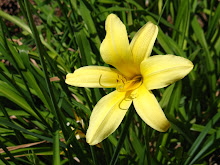Modern day Aleppo

“Aleppo is a city and province in northern Syria…It is one of the oldest cities in the region, known to antiquity as Khalpe, to the Greeks as Beroea, and to the Turks as Halep, and it occupies a strategic trading point midway between the sea and the Euphrates; initially, it was built on a small group of hills in a wide fertile valley on both sides of the river Quweiq. The province or governate extends around the city for over 16,000 km and has around 3.7 million inhabitants.” (source) Today it is the second largest city in the country, with a population of about 1.7 million, followed by Damascus. (Rabbo 2)
“The main role of the city was as a trading place, as it sat at the crossroads of two trade routes and mediated the trade from India, the Tigris and Euphrates regions and the route coming from Damascus in the South, which traced the base of the mountains rather than the rugged seacoast.” (source) However, because of political reasons, they usually tried to direct the trading away from the capital some. (Meriwether 3)
“Here at Aleppo the various governors and generals of the Mamluk realm gathered with their armies and met to discuss how they might best oppose the onrushing storm [of northern invaders;] and they drew up various plans…The highways and approaches were blockaded, and guards were set on all the roads. The main body of the army was drawn up before the gates to await the conqueror's arrival.” (source)
“Timur advanced cautiously from the north, knowing through his spies that word had been sent to the Arabs, Kurds, and Turkomans to attack him from the rear; this threat never materialized. In November of 1400 (the ninth day of the first month Rabia, by the Arab chronicler's reckoning) he arrived at the outer defensive lines. The first two days of the battle were spent in minor skirmishing; Timur probed the defenses with small detachments, which were torn to pieces by the Syrian horsemen. On the third day of battle, the two armies faced off across the plain of the city; on one side the Mamluk knights of Syria and Egypt, supplemented by the citizens of Aleppo (for even the women and children went out to meet the foe); on the other the hordes of Timur, with captured war elephants from India leading the center. Both sides raised their warcry: ‘Allahu Akbar!’, ‘God is great!’” (source)
“The battle did not last one hour. Timur had sent the wings of his horde to encircle the Syrians under the cover of the previous night, and they now broke over the assembled army like a wave, shattering the orderly ranks and throwing the field into confusion. When the cowardly and treacherous Tamardash (commanding the right wing) fled the plain of battle, the Syrians broke and ran for the gates of Aleppo. Timur had prepared a tuman (ten thousand) of his finest cavalry for just such an event, and he unleashed them in pursuit. Arabshah describes the advance of the Tatar's horde:” (source)
“‘Then he went over them like a razor over hair and ran like locusts over a green crop.’ The city was overrun. The streets ran with blood; the piled dead reached the top of the walls, forming a ramp for the invaders; the many slaves of the city broke down the gates in their mad headlong flight; all the accumulated treasure of generations was carried off by the victorious men of the steppe; the Jews of the city were herded into their synagogues and slaughtered to the last man.” (source)
Timur had no mercy, so he executed all those he could capture. The siege of Aleppo was a success. After this, he stayed in the city for about a month, then went on to Damascus, leaving the ruined Aleppo behind him.
Works Cited
Meriwether, Margaret L. The Kin Who Count: Family and Society in Ottoman Aleppo, 1770-1840. Austin, Texas: University of Texas Press. 1999.
Rabbo, Anika. A Shop of One’s Own: Independence and Reputation among Traders in Aleppo (Culture and Society in Western and Central Asia.) New York City: I.B. Taurus & Co Ltd. 2005.

Timur


No comments:
Post a Comment